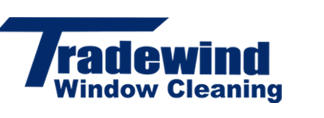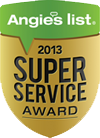When it comes to professional window cleaning, two primary methods dominate the industry—traditional squeegee cleaning and the modern water-fed pole system. At Tradewind Window Cleaning, we have extensive experience with both approaches and understand their individual strengths and appropriate applications. In this comprehensive guide, we compare both systems across essential criteria to help you make an informed decision regarding your property’s window maintenance.
The Foundation: Understanding Each Method
Traditional Squeegee Window Cleaning
This time-tested technique involves manual cleaning using a squeegee, bucket, applicator, and specialized cleaning solution. It requires close physical access to each pane, often involving ladders or scaffolding for high-rise and multi-story buildings.
Water-Fed Pole Window Cleaning
The water-fed pole system utilizes a telescopic pole equipped with a brush head and a filtered pure water delivery system. Purified water is sprayed onto the glass surface while the brush agitates dirt and debris. The pole can extend several stories high, allowing ground-based cleaning for most buildings.
Precision and Detail: Which Delivers a Superior Finish?
Squeegee Method: Unmatched Accuracy for Close-Up Work
When crystal-clear results are non-negotiable—such as for storefronts, display windows, and interior glass—the squeegee offers unsurpassed control. This method excels in:
- Detailed edge work around frames and seals
- Removing stubborn residues like bird droppings and sap
- Achieving a streak-free shine through practiced technique
- Performing quality assurance via close-up inspection
Water-Fed Pole: Efficient, Streak-Free Results on External Glass
The water-fed pole’s filtered water technology ensures windows dry spot-free, even without wiping. This makes it ideal for:
- Large commercial properties
- Multi-story residential buildings
- Cleaning frames and sills simultaneously
- Reducing streaking caused by hard water
Safety and Accessibility: Modern Method Wins on Height and Hazards
Squeegee Method: Physical Reach and Risk
For buildings above two stories, the traditional approach involves ladders, lifts, or rappelling equipment. This can introduce:
- Fall risks for technicians
- Higher insurance liabilities
- Potential damage to surrounding landscaping or exterior features
Water-Fed Pole: Ground-Based Safety
With poles extending up to 60 feet, technicians remain safely on the ground while accessing difficult windows. This minimizes:
- Workplace injuries
- Disruptions to the property
- Setup and takedown time, especially on large projects
Environmental Considerations: Sustainable Cleaning
Squeegee Method: Chemical Dependency
While many cleaners are eco-friendly, the squeegee method often involves:
- Use of soaps or surfactants
- Water waste due to rinsing
- Increased reliance on plastic containers
Water-Fed Pole: Eco-Conscious Purity
The system uses deionized water that requires no chemicals, making it:
- Non-toxic and biodegradable
- Safe for plants and pets
- Less impactful on drainage systems and waterways
Speed and Efficiency: Large-Scale Cleaning Advantage
Squeegee Method: Labor-Intensive and Time-Consuming
Traditional cleaning is:
- Time-intensive per window
- Prone to interruptions due to repositioning ladders
- Dependent on weather conditions for higher elevations
Water-Fed Pole: Maximum Output with Minimal Setup
Ideal for volume-based cleaning, the pole system allows:
- Cleaning of up to four stories in minutes
- Simultaneous frame and pane cleaning
- Reduced downtime between jobs
Versatility and Suitability: One Size Doesn’t Fit All
Squeegee Method: Interior and Delicate Applications
Squeegees are superior for:
- Indoor glass panels
- French panes and leaded glass
- High-visibility areas like retail displays
Water-Fed Pole: Exterior and Routine Maintenance
This method excels in:
- Routine cleanings for apartments and office buildings
- Windows in awkward positions (e.g., behind shrubbery)
- Solar panel cleaning and cladding maintenance
Cost Implications: Efficiency vs. Labor
Squeegee Method: Higher Labor Costs
Labor-intensive by nature, this method includes:
- Longer cleaning times per window
- Higher costs for elevated work platforms
- More frequent breaks due to physical strain
Water-Fed Pole: Economies of Scale
The system delivers:
- Lower labor costs per job
- Reduced cleaning time on large buildings
- Longer-lasting results, meaning less frequent visits
Customer Experience: What Property Owners Should Know
Squeegee Method: Personalized Attention
This method provides:
- Direct visual inspections of windows
- On-the-spot corrections for overlooked areas
- A sense of hands-on care and craftsmanship
Water-Fed Pole: Modern, Non-Invasive Service
Clients benefit from:
- Minimal noise disruption
- No damage to landscaping or exterior decor
- Quicker service delivery with fewer access concerns
Which Method Is Best for Your Needs?
At Tradewind Window Cleaning, we assess every job individually to determine the optimal method. Our hybrid approach—utilizing both squeegees and water-fed poles—ensures your windows receive the care they deserve based on:
- Building height and architecture
- Type of glass and finish required
- Budget and scheduling needs
- Environmental priorities
Conclusion: Choose the Experts Who Understand the Difference
Whether your property demands the detailed finesse of traditional squeegee work or the modern efficiency of water-fed poles, Tradewind Window Cleaning delivers results you can see—crystal clear and streak-free. We prioritize safety, sustainability, and superior outcomes with every project.
Let us tailor a window cleaning solution that aligns with your property’s needs and enhances its curb appeal, professionalism, and value. Reach out today for a consultation and experience the Tradewind difference.



